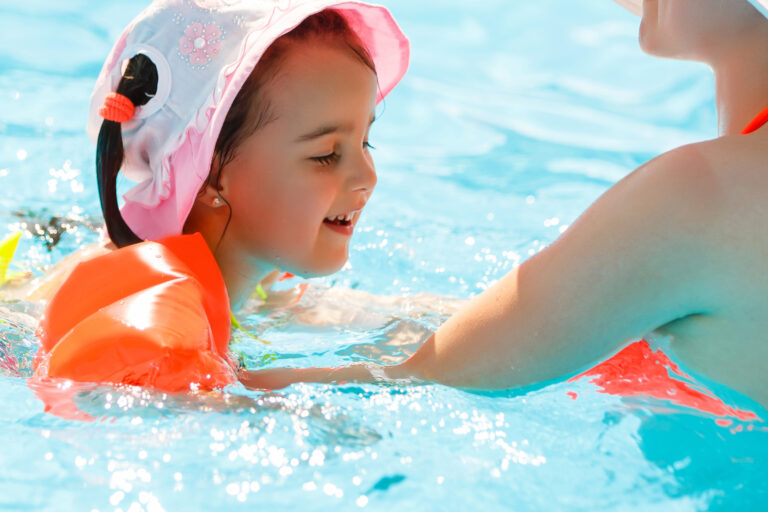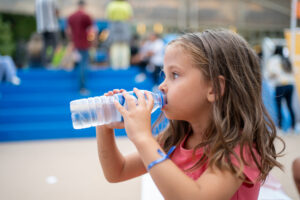Introduction to the Importance of Exercise for Kids
As a parent, it’s crucial to prioritize the health and well-being of your children. One of the most effective ways to achieve this is by introducing regular exercise for kids.
Physical activity not only helps in maintaining a healthy weight but also fosters the development of essential life skills.
In this article, I’ll delve into the numerous benefits of regular physical activity for children, age-appropriate exercise recommendations, and tips for making exercise enjoyable and motivating.
By the end, you’ll be well-equipped to support your child’s fitness journey and empower them to lead a healthy life.
The importance of exercise for kids cannot be understated. Due to technology becoming an integral part of our lives, it’s easy for children to become sedentary.
This often leads to weight gain, which can have serious consequences on their physical and emotional health. By engaging in regular physical activity, children can avoid these potential pitfalls while reaping the numerous benefits that exercise has to offer.
Furthermore, introducing exercise at a young age helps instill healthy habits that will last a lifetime. Just as we teach our children to brush their teeth and wash their hands, we must also educate them on the importance of physical activity.
By doing so, we empower them to take control of their health and well-being, setting them up for success in all aspects of life.
The Benefits of Regular Physical Activity for Children
There are countless benefits to regular exercise for kids. For starters, physical activity helps in maintaining a healthy weight, which is essential in combating childhood obesity.
With obesity rates on the rise, it’s more important than ever to ensure that our children are engaging in regular physical activity.
In addition to weight management, exercise also promotes healthy growth and development. Physical activity helps to build strong bones, muscles, and joints, making children less prone to injuries.
Moreover, exercise improves cardiovascular fitness, increasing the efficiency of the heart and lungs. This, in turn, helps to reduce the risk of developing chronic diseases later in life.
But the benefits of regular exercise for kids don’t stop there. Physical activity has also been linked to improved concentration, better academic performance, and enhanced social skills.
Not to mention, exercise is a natural mood booster, helping to alleviate stress and anxiety. With all these advantages in mind, it’s clear that incorporating regular physical activity into your child’s routine is essential for their overall well-being.
Age-Appropriate Exercise Recommendations for Kids
When it comes to exercise for kids, it’s important to consider the age and developmental stage of the child. The American Academy of Pediatrics (AAP) recommends the following guidelines for physical activity:
- Infants: Encourage daily physical activity through interactive floor play, such as tummy time and reaching for toys. This helps to develop motor skills and muscle strength.
- Toddlers (1-2 years): Aim for at least 30 minutes of structured physical activity and 60 minutes of unstructured play per day. Activities such as walking, climbing, and playing with balls are ideal for this age group.
- Preschoolers (3-5 years): Engage in at least 60 minutes of structured physical activity and 60 minutes of unstructured play per day. Activities that promote balance, coordination, and agility are recommended.
- School-aged children (6-17 years): Aim for at least 60 minutes of moderate to vigorous physical activity daily, incorporating aerobic, muscle-strengthening, and bone-strengthening exercises.
By adhering to these guidelines, you can help ensure that your child reaps the full benefits of regular exercise.
Fun and Engaging Exercise Activities for Kids
When it comes to exercise for kids, the key is to make it fun and engaging. Children are more likely to stick with an activity if they enjoy it, so it’s essential to choose exercises that are both age-appropriate and enjoyable. Here are some ideas to get you started:
- Dance parties: Crank up the music and have a dance party in your living room. Dancing is a fantastic way for children to express themselves while getting a great workout.
- Obstacle courses: Create an obstacle course in your backyard or at the park using items such as cones, hula hoops, and pool noodles. This is an excellent way to promote coordination, balance, and agility.
- Jump rope: Jumping rope is a fun and effective exercise for kids that improves cardiovascular fitness and coordination.
- Scavenger hunts: Organize a scavenger hunt in your neighborhood or local park. This encourages children to explore their environment while engaging in physical activity.
- Sports: Introduce your child to various sports, such as soccer, basketball, or swimming, to help them find an activity they truly enjoy.
Remember, the goal is to make exercise fun and enjoyable, so be sure to switch up activities and keep things fresh and exciting.
Encouraging Healthy Competition and Teamwork Through Exercise
Incorporating healthy competition and teamwork into your child’s exercise routine can be highly beneficial.
Participating in team sports or group activities not only teaches children the importance of collaboration, but it also fosters the development of essential social skills.
Furthermore, healthy competition can motivate children to push themselves and strive for improvement.
When introducing competition into exercise for kids, it’s essential to emphasize the importance of sportsmanship and fair play.
Encourage your child to celebrate their victories and learn from their defeats, all while treating their peers with respect and kindness.
Incorporating Physical Activity into Daily Routines
One of the most effective ways to ensure that your child gets enough exercise is by incorporating physical activity into their daily routine.
This can be as simple as walking or biking to school, taking the stairs instead of the elevator, or doing household chores together.
By making physical activity a regular part of their day, you help instill healthy habits that will last a lifetime.
In addition to integrating exercise into daily routines, it’s also important to create opportunities for physical activity throughout the day.
Encourage your child to participate in extracurricular activities, such as sports or dance classes, and set aside time for family outings, such as hikes or bike rides.
Making Exercise Enjoyable with Gamification and Technology
In today’s technologically-driven world, it’s important to leverage the power of gamification and technology to make exercise for kids more enjoyable.
Many fitness apps and video games incorporate elements of play and competition, making physical activity more engaging and fun.
For example, fitness trackers designed for kids often include gamification features, such as earning points or unlocking rewards for achieving activity goals. These devices not only help children track their progress but also motivate them to stay active.
Similarly, active video games, such as Wii Fit or Just Dance, can make exercise feel more like playtime. By incorporating technology into your child’s fitness routine, you can help keep them engaged and motivated.
Promoting Physical Activity in Schools and Communities
As a parent, you can also advocate for increased physical activity in schools and communities. Encourage your child’s school to prioritize physical education and offer extracurricular activities that promote fitness.
Additionally, support local initiatives that create opportunities for physical activity, such as community sports leagues or fitness programs.
By fostering a culture that values exercise and healthy living, you can help ensure that your child has access to the resources and opportunities they need to lead an active and healthy lifestyle.
Tips for Parents to Support Their Child’s Fitness Journey
Supporting your child’s fitness journey is crucial for their long-term health and well-being. Here are some tips for creating a nurturing and motivating environment that encourages regular exercise for kids:
a. Indoor Exercises
- Set up a designated space for physical activity within your home, complete with exercise equipment, such as mats, resistance bands, and exercise balls.
- Encourage your child to participate in online fitness classes or follow along with exercise videos geared toward their age group.
- Introduce fun and engaging indoor activities, such as yoga, Pilates, or bodyweight exercises that can be done in the comfort of your own home.
b. Outdoor Exercises
- Take advantage of the great outdoors by participating in outdoor activities, such as hiking, biking, or swimming.
- Organize family outings to local parks or nature trails to encourage exploration and physical activity.
- Participate in community events, such as charity walks or runs, to promote physical activity while supporting a good cause.
Tips for Making Exercise Enjoyable and Motivating
- Incorporate a variety of activities to keep things interesting and prevent boredom.
- Encourage your child to invite friends to participate in physical activities to promote socialization and teamwork.
- Celebrate your child’s achievements and progress, no matter how small, to keep them motivated and engaged.
Incorporating Physical Activity into Daily Routines
- Encourage your child to walk or bike to school instead of taking the bus or car.
- Take family walks after dinner or participate in physical activities together.
- Transform household chores into opportunities for physical activity by turning cleaning into a dance party or a game.
Encouraging Family Fitness and Teamwork
- Create family fitness challenges or competitions to encourage healthy competition and teamwork.
- Participate in group activities, such as family sports or games, to promote bonding and collaboration.
- Lead by example by prioritizing your own physical activity and health, which can inspire your child to do the same.
Resources for Finding Kid-Friendly Exercise Programs
- Check with your child’s school or local community center to see what extracurricular activities are available.
- Look for online resources, such as fitness classes or exercise videos geared toward children.
- Consider hiring a personal trainer or fitness coach to work with your child and create a personalized fitness plan.
Conclusion: Empowering Kids Through Healthy Habits
Incorporating regular exercise for kids is a crucial aspect of promoting their physical, mental, and emotional well-being.
By introducing fun and engaging physical activities, encouraging healthy competition and teamwork, and incorporating physical activity into daily routines, you can help instill healthy habits that will last a lifetime.
Remember to celebrate your child’s progress, prioritize their health and well-being, and lead by example to empower them to lead a healthy and active life.
So, let’s make exercise a fun and enjoyable experience for our little ones, and watch them grow stronger and healthier each day.












